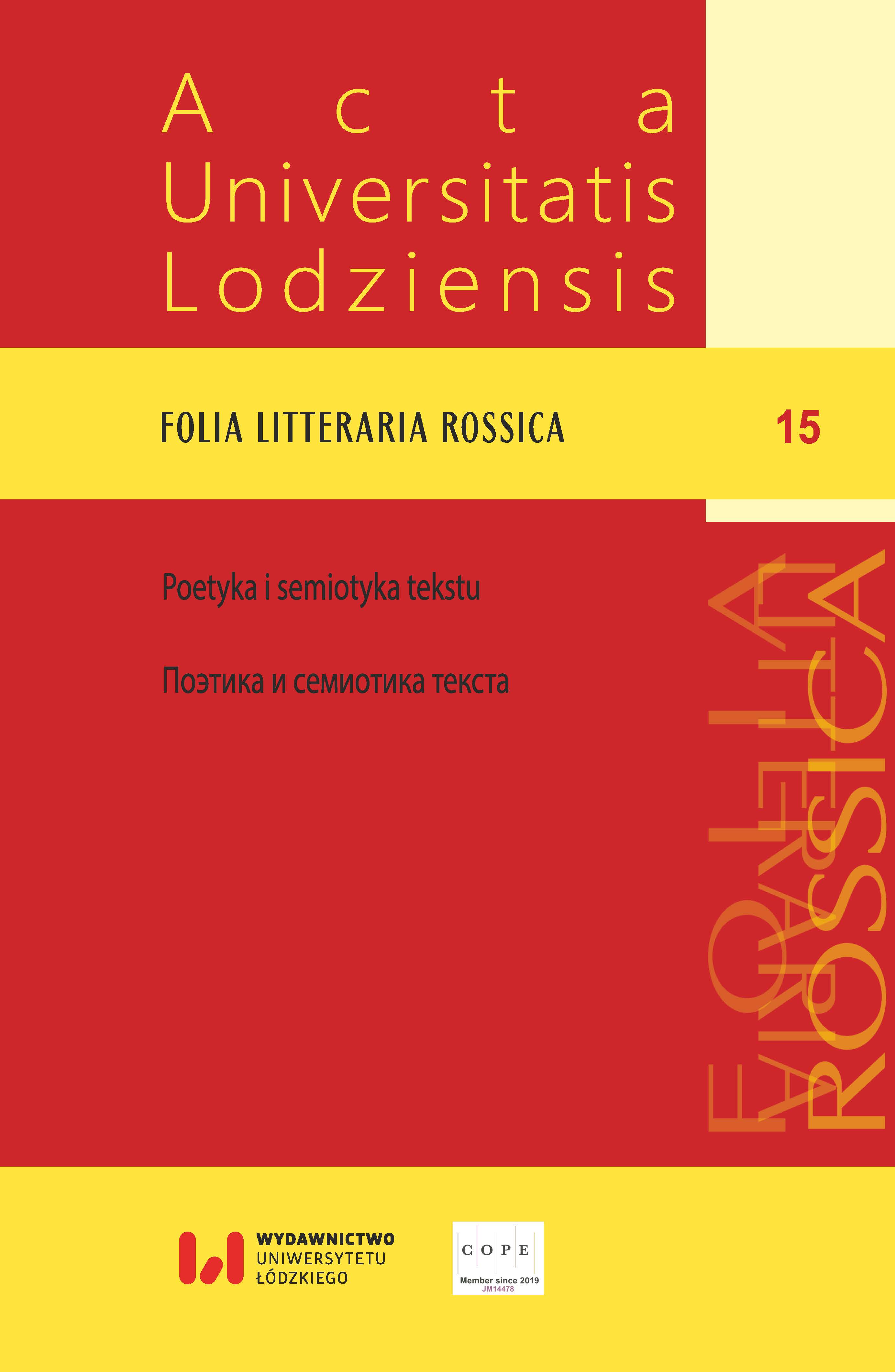Curious Deaths in the Russian Poetry of the 17th–18th Centuries
DOI:
https://doi.org/10.18778/1427-9681.15.22Keywords:
baroque, Ifika Hieropolitics, poetry, Theatrum mortisAbstract
The subject of the article is a poetic text from the manuscript in Tikhonravov’s collection, which is presented in the Russian State Library. It was created under the influence of medieval books, related to the theme of memento mori (Theatrum mortis humanae tripartitum). The poem describes three curious deaths, as an author qualifies them. Aegeus dies out of cowardice and the lack of wisdom when he saw the decrepit sails on his son’s ship, although Theseus came away from Crete with a victory. Aeschylus was killed because of his naivete when he was trying to avoid a prophecy saying that he would be killed by a falling of someone’s house, but an eagle dropped a tortoise on his head. Samson kills himself of excessive courage and the lack of wisdom. These stories, given in a poem as an exempla, are borrowed from the book Ifika Hieropolitics. When comparing these texts, one can see the technology of transcribing a prose text into a poetic text, which was used at the beginning of the 18th century. Lots of historical anecdotes about curious deaths have been known since antiquity. In the Middle Ages, they are grouped in literature on the theme of death. In Russia, this model was realised in the poetry of Simeon of Polotsk and flourished during the Baroque period. Such plots subsequently appeared in works of fiction and non-fiction, and not only in historical anecdotes, but also for characterising the absurdity of life and creating existential horror. Similarly to baroque texts, they still combine elements of the terrible and the curious.
Downloads
References
Huizinga, Johan. Osen Srednevekovya: issledovaniya form zhiznennogo uklada i form myshleniya v XIV i XV vekakh vo Frantsii i Niderlandakh. Moskva: Airis-press, 2004.
Google Scholar
Ifika Ieropolitika ili Filosofia nravouchitelnaya simvolami i priupodoblenii izyasnenna. Vena: Pri vostochnom illiricheskom tipografe Iosife Kurtsbek napechatana, 1774.
Google Scholar
Nikolaev, Sergei I. Stikhotvorenie Yakopone da Todi «O suete mira» v russkikh perevodakh XVII v. In: Trudy Otdela drevnerusskoi literatury. Sankt-Peterburg: Dmitrii Bulanin, 1996. Vol. 49: 224–236.
Google Scholar
Pamyatniki literatury Drevnei Rusi: sbornik. Moskva: Khudozhestvennaya literatura, 1994, vyp. 12: XVII vek, kn. 3, ed. S. I. Nikolaev, A. M. Panchenko.
Google Scholar
Polotskii, Simeon. Vertograd mnogotsvetnyi, eds. A. Khippisli, L. I. Sazonova. Köln, Weimar, Wien: Böhlau, 2000. Vol. 3.
Google Scholar
Russkaya sillabicheskaya poeziya XVII–XVIII vv., ed. A. M. Panchenko. Leningrad: Sovetskii pisatel, 1970.
Google Scholar
Tarkovskii, Rostislav; Tarkovskaya, Lana. Ezop na Rusi. Vek XVII: issledovaniya, teksty, kommentarii. Sankt-Peterburg: Dmitrii Bulanin, 2005.
Google Scholar
Valvasor, Johann Weikhard von. Theatrum mortis humanae tripartitum. Das ist: Schau-Bühne dess menschlichen Todts in drey Theil an Tag gegeben. Laybach: Joh. Baptista Mayer, 1682.
Google Scholar
Virshevaya poeziya (pervaya polovina XVII v.): sbornik, eds. V. K. Bylinin, A. A. Ilyushina. Moskva: Sovetskaya Rossiya, 1989.
Google Scholar
Voznesenskaya, Irina A. Zapiski V. A. Nashchokina: rol dokumenta v memuaristike XVIII v. In: Vspomogatelnye istoricheskie distsipliny: sbornik statei. Sankt-Peterburg: Dmitrii Bulanin, 2017. Vol. 36: 47–61.
Google Scholar
Downloads
Published
How to Cite
Issue
Section
License

This work is licensed under a Creative Commons Attribution-NonCommercial-NoDerivatives 4.0 International License.












